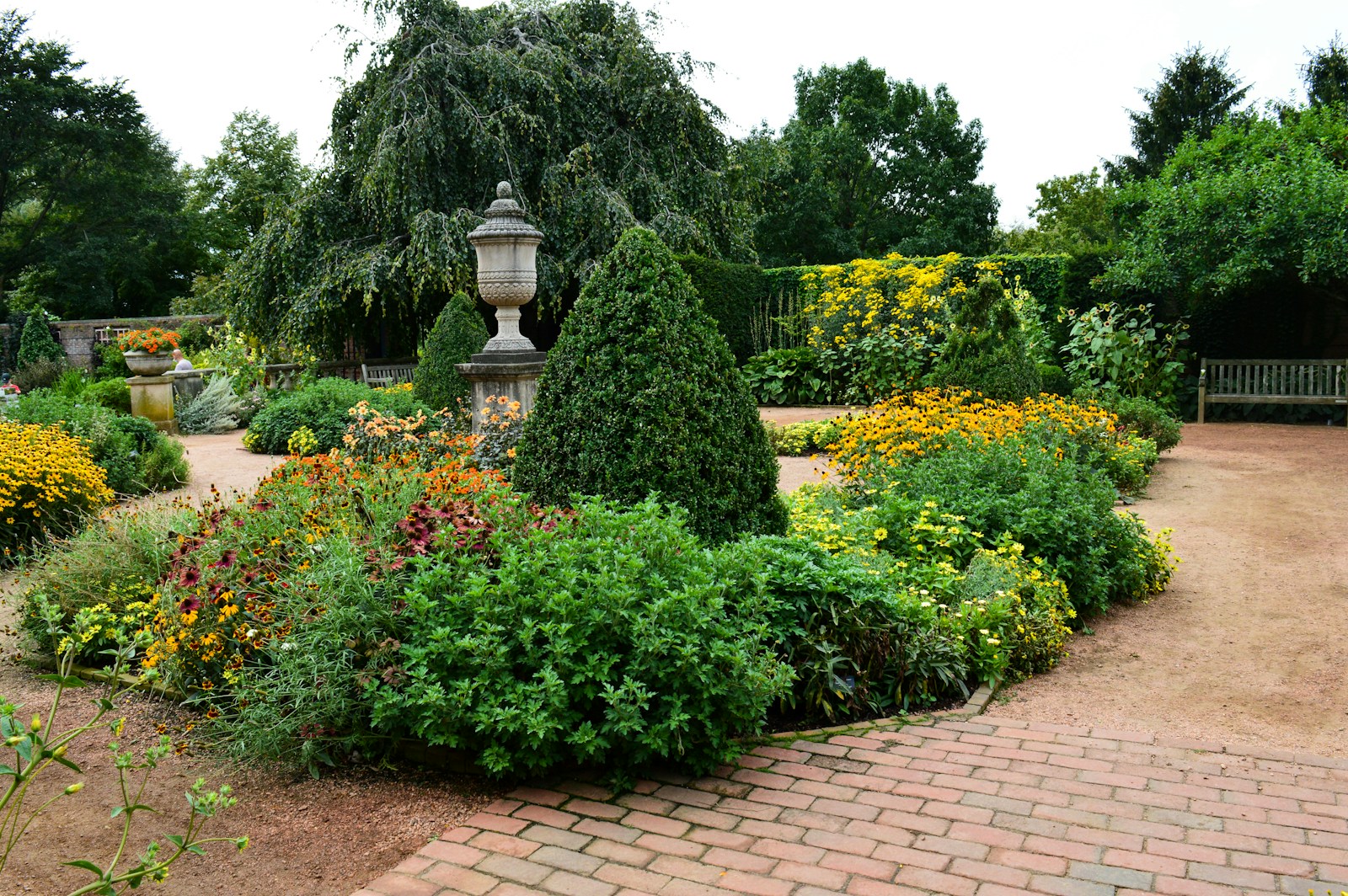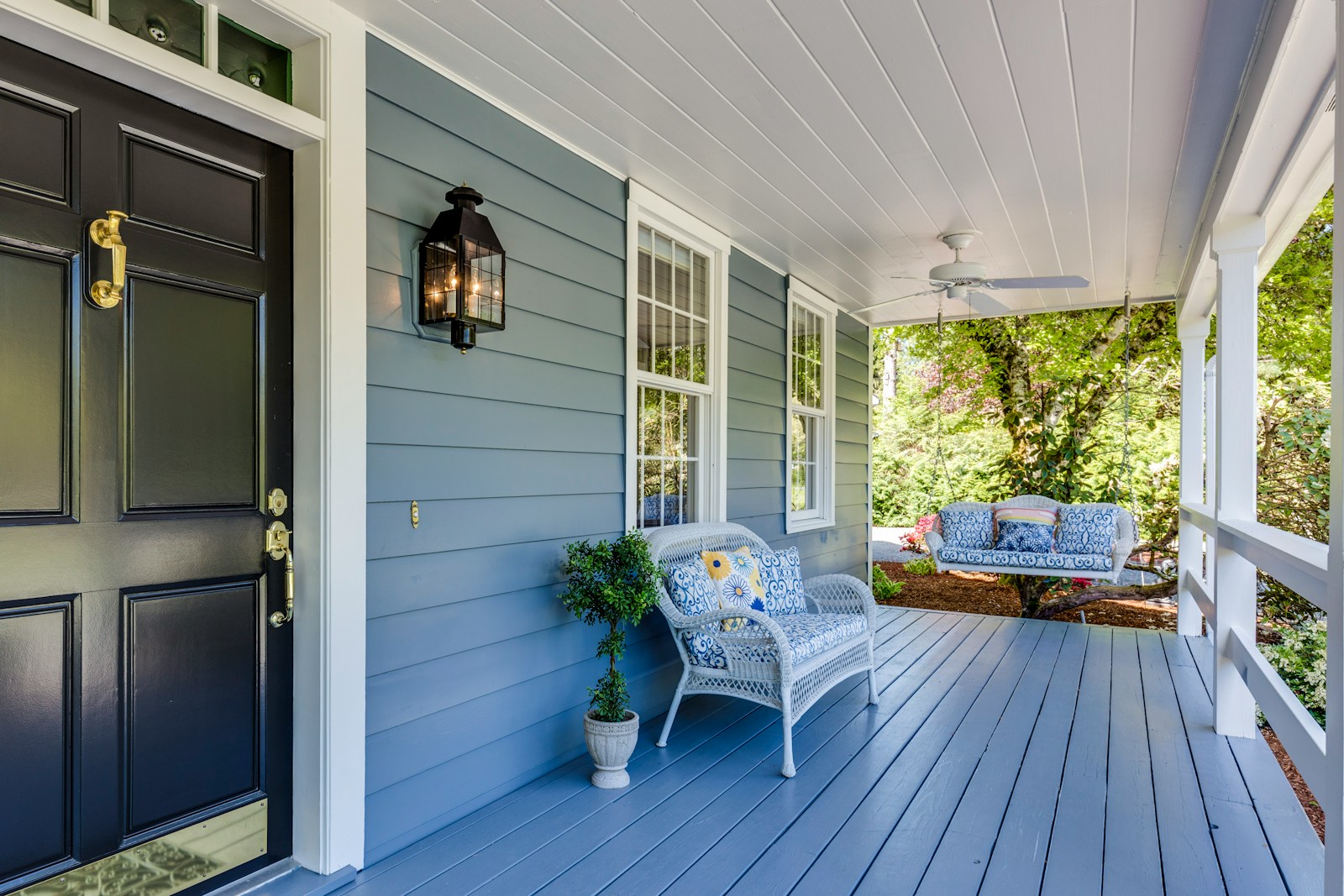Landscaping Ideas That Elevate Your Outdoor Style
Create a Focal Point with a Water Feature
Water features are an excellent way to elevate the style of your outdoor space. Adding a fountain, pond, or small waterfall can bring tranquility, movement, and beauty to your landscape. The sound of flowing water also creates a calming atmosphere that makes your outdoor area more inviting.
For a more dramatic effect, you can install a water feature as a central focal point in your garden or backyard. Surround the feature with lush greenery, decorative stones, or flowering plants to enhance its beauty and integrate it seamlessly into your landscape design.
Incorporate Vertical Gardens
Vertical gardens are a fantastic landscaping idea for maximizing space and creating visual interest. Whether you’re working with a small yard or want to add height to a larger space, vertical gardens allow you to grow climbing plants, flowers, or even vegetables without taking up valuable ground space.
Consider installing trellises, living walls, or hanging planters to add a vertical element to your garden. This not only makes the area look more stylish but also helps in creating a lush, green environment that draws the eye upwards, making the space feel larger and more dynamic.
Define Your Space with Edging
Landscaping edging is an easy and effective way to define different areas of your outdoor space, such as flower beds, pathways, or garden borders. Using materials like stone, brick, metal, or wood can add texture and structure, creating a neat and polished look while enhancing your overall landscaping style.
Edging can also help control the growth of plants and prevent mulch from spilling into other areas. It’s a simple yet impactful way to organize your space and give your garden a more professional, curated appearance that will elevate its style.
Use Bold, Statement Plants
Incorporating bold, statement plants into your landscaping design can create a striking focal point and add drama to your outdoor space. Plants with unique shapes, vibrant colors, or unusual textures, such as large-leafed tropical plants or architectural grasses, can instantly elevate the look of your garden.
Group these statement plants together or place them near entrances, patios, or along pathways to draw attention. Mix them with softer plants or ground cover to create balance and ensure that your bold plants stand out while still fitting into the overall design of your landscape.
Integrate Pathways for Style and Function
Pathways not only serve a practical purpose in guiding people through your outdoor space, but they also offer an opportunity to enhance the style of your landscape. By incorporating materials like gravel, flagstone, or brick, you can create visually appealing paths that lead guests to different areas of your garden, such as a seating area, water feature, or garden beds.
Consider designing meandering pathways for a natural, organic look or opt for geometric patterns for a more modern, structured feel. Pathways add depth, flow, and visual interest, making them an essential element in elevating your outdoor space.
Create Cozy Outdoor Rooms with Furniture and Privacy
Transform your outdoor space into a cozy retreat by creating distinct “rooms” within the landscape. By grouping comfortable furniture, such as sofas or armchairs, and adding privacy features like tall plants or screens, you can create separate areas for relaxation, dining, or entertaining. This is especially effective in larger yards or patios where creating a sense of intimacy is important.
For added style, incorporate outdoor rugs, throw pillows, and outdoor lighting to enhance the cozy atmosphere and make each room feel inviting. These cozy outdoor rooms offer a perfect balance of comfort and style, making your backyard or patio feel like an extension of your home.
Incorporate Seasonal Plants for Year-Round Interest
One way to keep your landscaping fresh and dynamic throughout the year is by incorporating seasonal plants. Choose plants that bloom in different seasons, such as spring bulbs, summer flowers, and fall foliage, to ensure your outdoor space always has something beautiful to offer.
Incorporating seasonal plants also gives you the opportunity to refresh the look of your landscape with each changing season. Planting a mix of perennials, annuals, and evergreens will provide year-round interest and make your garden feel full of life no matter the time of year.
Incorporate Sustainable Landscaping Ideas
Sustainable landscaping ideas not only enhance the beauty of your outdoor space but also help conserve water and reduce maintenance. Opt for drought-tolerant plants that thrive in your region’s climate, use mulch to retain moisture, and install rain barrels to collect and reuse water for irrigation.
Consider creating a native plant garden to support local wildlife and reduce the need for chemical fertilizers or pesticides. Sustainable landscaping reduces your environmental impact while elevating your outdoor space with eco-friendly, low-maintenance ideas that are both stylish and practical.
Use Sculptural Elements for Visual Impact
Incorporating sculptural elements into your landscape design adds artistic flair and visual interest. Sculptures, statues, or other artistic features can serve as a striking focal point in your garden or yard. Choose sculptures that reflect your personal style, whether contemporary, whimsical, or classical.
These sculptural elements create visual impact and can be placed along pathways, near seating areas, or as standalone statements in open spaces. When thoughtfully integrated into the design, sculptures elevate the overall aesthetic of your landscape and give it a sophisticated, curated feel.
Incorporate Outdoor Lighting for Ambiance
Outdoor lighting is one of the most effective ways to enhance the ambiance of your landscape. Use string lights, lanterns, or LED spotlights to highlight key features such as trees, sculptures, or garden beds. Path lights help illuminate walkways, while spotlights create drama and focus on architectural or natural elements in your garden.
Lighting also adds a cozy, inviting atmosphere in the evenings, making your outdoor space feel warm and welcoming. Consider using solar-powered lights for an eco-friendly solution, ensuring your landscape remains beautiful and functional even after the sun sets.
Utilize Rocks and Gravel for Texture
Rocks and gravel are fantastic landscaping materials that add texture and structure to your outdoor space. Use gravel to create paths, borders, or ground cover that complements plants, while rocks can be arranged as decorative elements, garden walls, or small dry riverbeds. Both materials are low-maintenance, and their natural appearance blends seamlessly into a variety of landscaping styles.
For a more modern feel, use large boulders and sleek gravel, while smaller rocks and pebbles work well in rustic or Mediterranean gardens. This versatile material can elevate your landscape by providing depth, texture, and a natural aesthetic.
Design Multi-Layered Gardens
Multi-layered gardens create visual interest and make the most of your outdoor space. By incorporating plants of different heights and textures, you can achieve a garden that looks lush and full. Start with tall plants like trees or vertical shrubs as the backdrop, and layer smaller plants like flowers, ferns, or ground cover in front. This layering technique adds depth and variety to your landscape, making it more dynamic and visually appealing.
Multi-layered gardens also offer a sense of natural beauty and organization. They work well in both small and large spaces, allowing you to build a cohesive and stylish design while utilizing every inch of your garden.
Go Green with Turf Alternatives
Traditional lawns can be high-maintenance, requiring regular watering, mowing, and fertilizing. To elevate your outdoor style while being more sustainable, consider turf alternatives like ground covers, native grasses, or clover lawns. These options require less water and upkeep while still providing the green, lush look that many homeowners desire.
Ground covers like thyme, creeping juniper, or sedum can add texture and color to your landscape while keeping the space easy to maintain. Turf alternatives not only save you time and money but also contribute to a more eco-friendly landscape design.
Create Outdoor Rooms with Furniture and Layout
Much like indoor spaces, outdoor rooms can help define your landscape and make it more functional. Create separate zones within your garden by grouping furniture, adding partitions, or using landscaping elements like hedges, fences, or raised beds. A dining area, lounge space, and a quiet retreat can each have its own designated space while maintaining a cohesive overall design.
Use furniture that suits the style of your space and allows for comfortable seating. Add decorative elements such as rugs, cushions, or outdoor curtains to make the space feel more like an extension of your home. These outdoor rooms provide an intimate, stylish setting that enhances both the functionality and aesthetic of your garden.
Incorporate Outdoor Art and Sculptures
Outdoor art and sculptures are a fantastic way to add personality and style to your landscape. Choose sculptures, murals, or garden art that complement your overall design theme—whether it’s modern, rustic, or eclectic. Sculptures can be placed strategically to create focal points, draw attention to certain areas of the garden, or add a whimsical touch to your outdoor space.
Incorporating art into your landscaping design not only enhances its visual appeal but also allows you to express your personal style. From abstract metal sculptures to ceramic garden gnomes, outdoor art adds character and charm to any garden.
Frequently Asked Questions
What are the best landscaping ideas for small yards?
For small yards, maximizing space is key. Consider using vertical gardens with trellises or climbing plants to add greenery without taking up much ground space. Multi-functional furniture, such as storage benches or foldable tables, can help you make the most of your outdoor area. Incorporating plants of varying heights and textures adds depth and visual interest, and using light-colored materials or paving can make the space feel larger. Consider creating outdoor rooms to define different areas, adding a sense of privacy and organization while still using minimal space.
How can I make my garden more visually appealing?
To make your garden more visually appealing, incorporate a variety of plants with different colors, textures, and sizes. Consider adding a focal point such as a water feature, sculpture, or a bold plant. Use landscaping techniques like multi-layered planting to create depth, and define spaces with garden edging, pathways, or borders. Include seating areas or outdoor rooms to make the space more functional and inviting. Thoughtfully placed lighting can enhance your garden’s beauty, highlighting key features and creating ambiance in the evenings.
What landscaping ideas can help with privacy in my yard?
To increase privacy in your yard, consider using tall plants, hedges, or bamboo screens to create natural barriers. Fencing or trellises with climbing vines can also provide privacy while adding a touch of greenery. Using outdoor curtains around seating areas can further enhance the sense of seclusion. If you have a small space, strategically placed trees or shrubs can block out neighbors or unwanted views, while still maintaining an open and airy feel. Privacy fences with decorative elements can also complement your overall landscape design.
How do I create a low-maintenance landscape?
To create a low-maintenance landscape, choose plants that are native to your region, as they are better adapted to local weather conditions and require less water and care. Opt for ground covers and drought-tolerant plants like succulents, ornamental grasses, or shrubs that require minimal pruning. Incorporate mulch to reduce weeding and retain moisture, and use automatic irrigation systems to keep plants hydrated efficiently. Selecting hardscaping elements like stone or gravel pathways reduces the need for lawn upkeep and enhances the overall beauty with minimal effort.
What are some eco-friendly landscaping ideas?
Eco-friendly landscaping ideas focus on conserving water, supporting local wildlife, and reducing environmental impact. Plant native species that require less water and attract beneficial insects or pollinators. Install rain barrels to collect rainwater for irrigation, and use compost to enrich the soil. Choose sustainable materials such as recycled wood or bamboo for fences or furniture. By opting for drought-tolerant plants and minimizing the use of pesticides and fertilizers, you can create a garden that is both beautiful and environmentally conscious.
© 2025 GardeningandDecor.com. All rights reserved.



